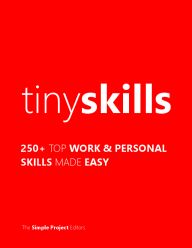Key Things to Know About VR Headsets
1. Applications and Software
- Video Games: A major driver of VR innovation; supported by large studios and indie developers.
- Virtual Tours: Used for real estate, museums, or exploring destinations.
- Artistic Tools: Tools to create 3D models in virtual environments.
- Virtual Cinema: Immersive 360-degree videos and interactive movies for entertainment.
2. Display Quality
- Resolution: Higher resolutions provide sharper visuals.
- Refresh Rate: Standard rates are 60-90Hz; higher rates reduce latency for smoother visuals.
- Field of View: Wider fields create more immersive experiences; human vision can reach up to 180\u00b0.
3. Hardware Compatibility
- PC Requirements: Many headsets need high-end GPUs and substantial memory.
- Console-Specific: Compatible only with certain gaming consoles like PlayStation or Xbox.
- Mobile VR: Runs on smartphones but lacks power compared to PC or console headsets.
4. Comfort and Adjustability
- Weight: Lightweight headsets (<1lb) are less cumbersome for extended sessions.
- Straps and Padding: Adjustable straps and cushioned padding improve fit and comfort.
- Visual Adjustments: Some headsets accommodate glasses or offer lens adjustments for clarity.
5. Controls
- Built-in Controls: Buttons on the headset or gesture tracking for interaction.
- Gamepads: Essential for gaming; console-specific or universal for PC.
- Haptic Feedback: Advanced controllers that replicate touch and motion.
6. Tracking Area Requirements \udded
- Sensor Placement: Single or multi-sensor setups affect the space needed for tracking.
- Clear Area: Remove tripping hazards and ensure adequate space for standing or seated use.
- Comfort Enhancements: Anti-fatigue mats or swivel chairs for extended sessions.
Types of VR Headsets
- PC-Compatible
- High-quality visuals.
-
Requires a powerful computer.
-
Mobile Headsets
- Lightweight and portable.
-
Limited to smartphone processing power.
-
Console-Specific
- Easy to set up with gaming consoles.
-
Limited to console ecosystems.
-
Standalone/All-in-One
- No external power source; built-in processing.
- Increased mobility but may require charging.
Who Uses VR?
- Gamers: Immersive gameplay and enhanced experiences.
- Tech Enthusiasts: Early adopters intrigued by VR's novelty.
- Digital Artists: For creating 3D models and immersive artwork.
- Software Developers: Experimenting with new VR applications and tools.
- Educators: For virtual field trips, technical training, and innovative teaching methods.
Expert Tip
When choosing a VR headset, ensure compatibility with your existing hardware and consider your primary use - gaming, development, or casual entertainment - to match features to your needs. Don't forget to account for space and comfort for longer sessions!
Top VR Headsets
Here's a breakdown of popular VR headsets, their features, and the type of users they cater to:
1. HTC Vive
- Room Scale VR: Utilizes base-mounted sensors to create a 360-degree virtual space for users to explore by walking around.
- Controllers: Comes with haptic wireless controllers that track gestures for natural interaction.
- Smartphone Integration: In development for receiving calls and messages in VR.
- Installation Support: Offers professional setup in select cities.
- Best For: Users with space for a fully immersive, room-scale VR experience.
2. Oculus Rift
- Extensive Library: Offers a robust selection of games and VR experiences, including the included game, Lucky's Tale.
- PC Compatibility: Requires a high-performance PC; compatibility tool available online.
- Lightweight Design: Adjustable straps and cushions for extended use.
- Best For: Gamers and early adopters seeking a solid, PC-compatible VR experience.
3. PlayStation VR
- Exclusive Content: Features games designed exclusively for the PlayStation VR platform.
- High Refresh Rate: Runs at 120Hz with minimal latency for smooth gameplay.
- Cinematic Mode: Allows non-VR PlayStation 4 games to be played in a virtual theater environment.
- Best For: PlayStation 4/5 owners looking for an accessible and immersive gaming experience.
4. Samsung Gear VR
- Mobile VR: Designed for Samsung smartphones like Galaxy S6 and S7.
- User Comfort: Lightweight with adjustable straps and focus dial for users without glasses.
- Oculus Collaboration: Access to Oculus Store and apps.
- Best For: Samsung phone users wanting an affordable entry into VR.
5. Microsoft HoloLens
- Mixed Reality: Combines virtual holograms with the real-world environment.
- Standalone Device: A complete computer that runs on Windows 10.
- Spatial Awareness: Retains the user's peripheral vision, blending real and virtual spaces.
- Best For: Developers and creators exploring augmented and mixed reality applications.
6. Google Cardboard
- Budget-Friendly: Inexpensive and simple VR viewer made from cardboard.
- Customizable: Easily modified and decorated by users.
- Accessible Content: Works with VR apps and YouTube 360-degree videos.
- Best For: Casual users or first-time VR explorers on a budget.
7. Razer OSVR
- Open-Source VR: Designed for compatibility with all hardware and software.
- Upgradeable: Customizable to accommodate new tech trends.
- Gaming Focus: Partners with major developers like Ubisoft for game development.
- Best For: Gamers and developers interested in open-source VR technology.
Comparison Summary
| Headset | Key Feature | Best For |
|----------------------|-------------------------------|--------------------------------------------|
| HTC Vive | Room-scale VR | Immersive, room-scale gaming. |
| Oculus Rift | PC Compatibility | High-performance PC gamers. |
| PlayStation VR | Exclusive games, simplicity | PlayStation console owners. |
| Samsung Gear VR | Mobile-powered VR | Samsung smartphone users. |
| Microsoft HoloLens | Mixed reality capabilities | Developers and digital creators. |
| Google Cardboard | Affordable and easy to use | First-time VR users. |
| Razer OSVR | Open-source platform | Tech-savvy gamers and developers. |
Expert Insight
- Consider Your Setup: Room scale VR requires space, while mobile and console-based VR headsets have simpler setups.
- Match to Use Case: Gaming, creativity, or casual use - choose based on the features most relevant to you.
- Budget-Friendly Options: Google Cardboard or Samsung Gear VR offer cost-effective solutions for beginners.
Explore and immerse yourself in the future of VR with the headset that fits your needs!
Next: Read 2500+ consumer guides to shopping, electronics, appliances, home services, cars, money and more.

